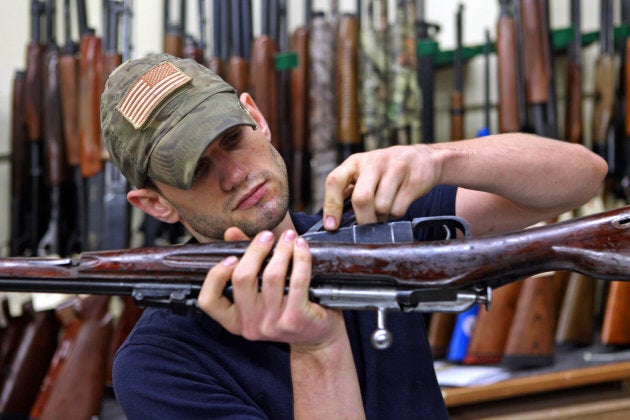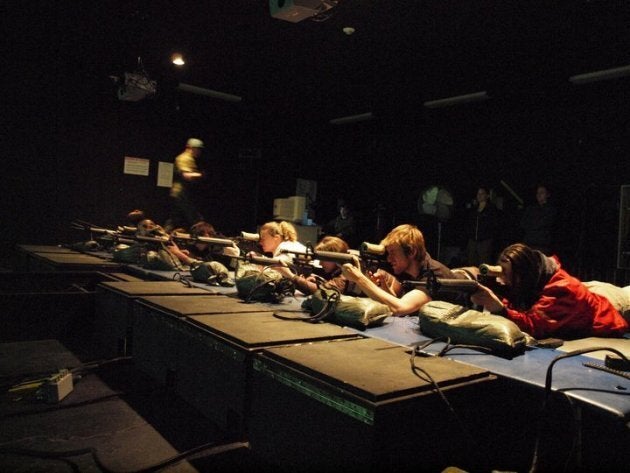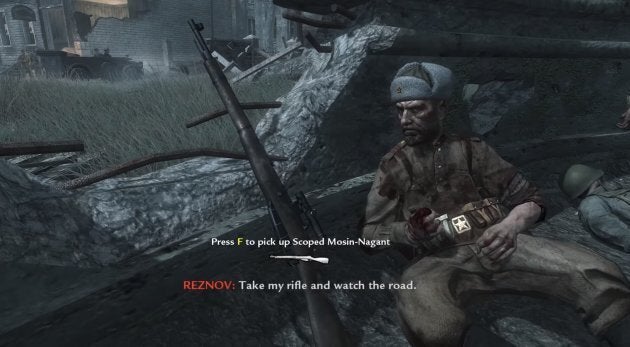Confession: I’m a gun moderate (well, as far as Canadians go). I don’t think there’s anything remotely god-given about bearing arms, but I also don’t believe in total bans.
I grew up in the United States, steeped in its gun-friendly culture, for my formative years. But I learned most about guns earning my Canadian firearms license, cheerfully known around these parts as a PAL (possession and acquisition license).

I originally set out to obtain my license about 10 years ago, after I moved to London, Ont. for university. In the wisdom of my early 20s, I did so because I figured I had the right to do so, therefore I should exercise it — "you can take the boy out of the States," and all that — so on principle, basically. I crossed the border into a country I thought was unnecessarily fearful of firearms, so it felt transgressive, cool and one way to assert my quasi-American identity.
Now I know there's only one word for how I felt — "entitled" — and between that attitude and my fondness for anything military, it seemed a foregone conclusion that I, too, would one day own a firearm of my own.
I had become accustomed to the idea of somebody buying a gun when they turned 18, the legal age for certain firearms under my home state of Michigan's law. At that age, if you're lucky, a knowledgeable family member would teach you everything you needed to know. But just as many young adults have to fill in the blanks themselves.

Quality formal instruction has long been available, sure — one of the few things I'd commend the NRA on — but setting the bar for obtaining a firearm at little more than your age and possibly a background check ultimately ensures only the most ambitious seek out instruction. You can't expect a teenager to educate themselves when a loose interpretation of the Second Amendment automatically grants them the privilege without further effort.
It's a funny thing, then, completing a weeks-long process — including the Canadian Firearm Safety Course, test and wait time before finally receiving the license itself — only to end up never buying a rifle as I had planned.
Going in, I had a basic understanding of how the parts worked together. I knew well enough not to point a gun at anything I wasn't absolutely certain I wanted to destroy. I had even shot my friend's Mosin Nagant at a firing range near Brighton, Mich., racking up my share of centre-targets. It was a rush, and I felt like I finally knew what everyone was talking about. I was also happy to discover I was a decent shot.
(This was confirmed again during journalism school, when I shot around a Canadian Forces virtual firing range.)

I wanted a rifle just like my buddy’s. But not only did the Canadian government think I still needed to know more before owning a tool used for killing — as a logical and well-adjusted human being, so did I.
Despite a busy school schedule, every week I’d take an hour-long bus ride to London’s south end for instruction. The classroom was a little more than a shack, but at least there was coffee. I came to know students who all seemed to have at least a little exposure to guns — but who were also willing to learn more.
The instruction I received was completely sensible and entirely practical. And a little boring, if I have to be completely honest. Still, I studied hard and learned as much as I could, knowing the respect I learned for my firearm today could save my life (or somebody else’s) tomorrow.
“It wasn't exactly what American gun culture had promised me, not by a long shot.”
I remember practicing how I’d carry a rifle and safely traverse a country fence, for example. I learned that storing a rifle loaded or in the same room as your ammunition increases the chances of it being used against you. Transporting a handgun from point A to point B requires a tremendous amount of logistics, if you want to do it legally. I read about laws, charts, paperwork — all without letting loose a single live round.
Like I said: a little boring. That rush of excitement I felt the first time I fired a gun? A distant memory. It didn’t play out like Call of Duty come to life, or a scene from a History Channel documentary about the Second World War. It didn’t feel like anything worth marking a coming of age, let alone something I ought to consider a core part of my identity. It wasn’t exactly what American gun culture and media had promised me, not by a long shot.

Somewhere between the dull lessons about safeties and the final exam, which I aced, the decommissioned rifle in my hands shed its romanticized appeal until it resembled exactly what it was — a tool — not a belief system, not an identity, not something to show off. And it was also a tool I simply hadn’t any use for at this time in my life.
I wasn’t a hunter or a rural dweller who might actually need a gun for their livelihood or to protect themselves. And I certainly wasn’t a cop or a soldier. I was just some kid living in a city, where the long list of legitimate uses for a gun boils down to, more or less, hurting other people. It finally made sense why most Canadians would want a total ban on guns in urban areas.
“True respect for a gun is knowing you probably don’t need one — and only owning one if you do.”
Everything I learned was valuable, and I feel prepared to handle a gun. But it took crossing the border for me to realize that having the right or ability to own a gun doesn’t mean you need to, or should, own one. True respect for a gun is knowing you probably don’t need one — and only owning one if you do.
And what an important lesson that was.
Licensure and the mandatory instruction that leads up to it here in Canada is an in-depth process, one designed to educate and engender respect for firearms, and succeeds in breaking down biases and preconceptions. Step one of an expanded background check, if you will — a reality check, in my case.
In the States, though, licensure is practically considered a human rights violation among some circles. There’s less formal education, and less respect for firearms as a result — perhaps this plays a part in why so many unnecessary guns find their ways into the wrong people’s hands.
We don’t have it perfect here in Canada, but U.S. lawmakers dealing with mass shootings and everyday gun violence would do well to look north.
In the meantime, it has been two or three years since I’ve let my PAL expire. I have no plans to renew it.
CORRECTION: An earlier version of this blog stated that PAL stands for “purchase and acquisition license.” It actually stands for “possession and acquisition license.”
Also on HuffPost: